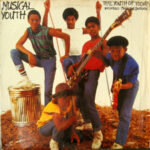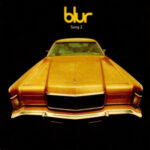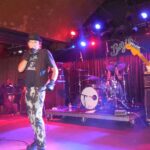In the annals of cinema history, few films have generated as much controversy and debate as Ruggero Deodato’s “Cannibal Holocaust” (1980). This Italian exploitation horror film is a remarkable and disturbing journey into the darkest realms of human behavior. Notorious for its graphic violence and controversial themes, “Cannibal Holocaust” has left an indelible mark on the world of extreme cinema.
Plot
“Cannibal Holocaust” is set in the Amazon rainforest and follows the ill-fated journey of a documentary film crew led by director Alan Yates. The crew’s initial intent is to make a documentary about indigenous tribes in the rainforest, but their expedition takes a horrific turn as they descend into brutality and barbarity.
The film’s narrative is divided into two parts. The first part unfolds as a rescue mission, in which a New York University anthropologist, Harold Monroe, sets out to find the missing documentary crew. Along with his guide, Chaco, Monroe ventures deep into the Amazon, encountering various tribes along the way. He eventually discovers the gruesome remains of the documentary team and their canisters of film.
The second part of the film consists of the recovered footage from the documentary crew’s cameras. As Monroe reviews the footage, the audience is exposed to the crew’s increasingly inhumane actions. The crew’s interaction with indigenous tribes escalates from intrusive curiosity to brutality, including rape, murder, and the destruction of villages. The climax reveals that the crew met a gruesome end at the hands of the very tribes they sought to document.
Throughout the film, “Cannibal Holocaust” raises profound questions about the ethics of filmmaking, the exploitation of indigenous cultures, and the capacity for cruelty within the human soul. The found footage style of the film, innovative for its time, adds to its disturbing realism and provocative power.
History
The production and release of “Cannibal Holocaust” are almost as controversial as the film itself. Here is a brief overview of its history:
The Inspiration: Ruggero Deodato, the director, was inspired by the success of Mondo films in the 1960s and 1970s. These pseudo-documentaries often featured shocking and sensational content. “Cannibal Holocaust” can be seen as a dark and fictionalized extension of this genre.
Casting Indigenous People: To add authenticity to the film, Deodato cast indigenous people from the Amazon to play the native tribes. This decision later became a source of controversy as accusations of exploitation emerged.
Legal Battles: After the film’s release, Deodato faced legal troubles. He was arrested and charged with murder because the film’s marketing campaign suggested that the actors had been killed during the production. He was able to clear his name by proving that the actors were still alive.
Censorship and Bans: “Cannibal Holocaust” faced widespread censorship and bans in several countries due to its extreme content. In some places, it was even considered a “snuff film,” where real murders were committed on camera.
Cult Following: Despite its notoriety, “Cannibal Holocaust” developed a cult following over the years, with some cinephiles appreciating its audacity and commentary on exploitation.
Review
“Cannibal Holocaust” is a film that defies easy categorization. It is simultaneously reviled and revered, celebrated as a daring piece of art and condemned as a grotesque spectacle.
1. Shocking Realism: One of the most striking aspects of “Cannibal Holocaust” is its shocking realism. The found footage style, which has since become a hallmark of the horror genre, immerses viewers in the unfolding horrors. The use of actual indigenous actors and animals being killed on-screen adds to the film’s unsettling authenticity.
2. Ethical Dilemmas: “Cannibal Holocaust” is a thought-provoking exploration of ethical dilemmas in both filmmaking and the treatment of indigenous cultures. It challenges the audience to confront uncomfortable questions about the lengths to which individuals and media outlets are willing to go for sensationalism and profit.
3. Gruesome Violence: There’s no denying that the film is incredibly graphic and disturbing. The violence, including sexual assault and gruesome murders, is difficult to watch. It serves as a stark reminder of the capacity for cruelty within human society.
4. Social Commentary: Beneath the veneer of extreme horror, “Cannibal Holocaust” offers a scathing critique of Western colonialism, cultural imperialism, and exploitation. It forces viewers to confront their own complicity in these injustices.
5. Cinematic Pioneering: From a cinematic perspective, “Cannibal Holocaust” is undeniably influential. The found footage format, which was relatively new at the time, has since been employed in numerous successful horror films, including “The Blair Witch Project” and the “Paranormal Activity” series.
6. Controversy and Cultural Impact: “Cannibal Holocaust” remains a lightning rod for controversy and discussion, sparking debates about freedom of expression, artistic boundaries, and the responsibilities of filmmakers. Its cultural impact, both in terms of shock value and cinematic innovation, cannot be understated.
In conclusion, “Cannibal Holocaust” is a cinematic anomaly that continues to captivate and repulse audiences in equal measure. Its audacious exploration of ethical and societal issues, coupled with its groundbreaking filmmaking techniques, has secured its place as a notorious and enduring work of extreme cinema. While it is not a film for the faint of heart, “Cannibal Holocaust” remains a testament to the provocative power of cinema to challenge, disturb, and provoke thought.
Watch
Or
This post has already been read 241 times!










